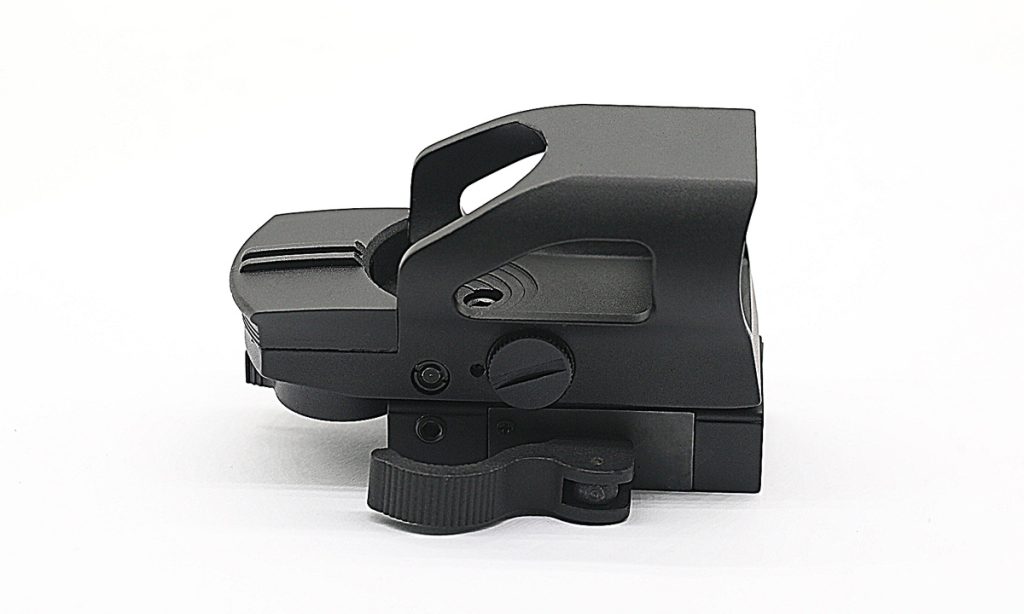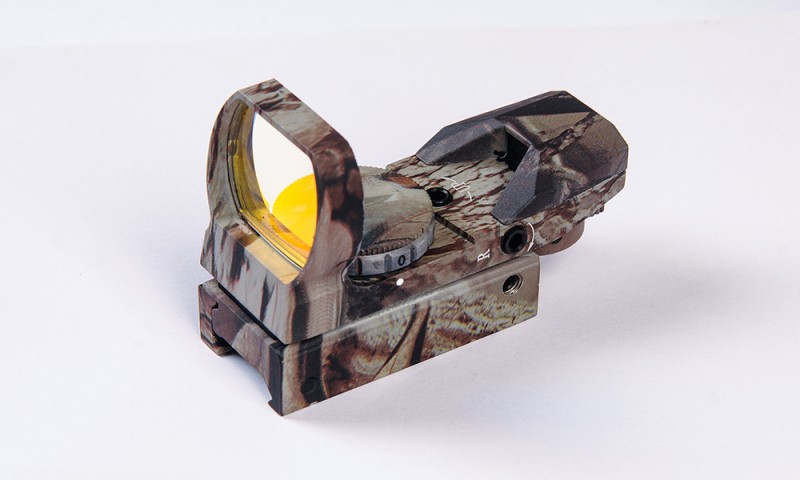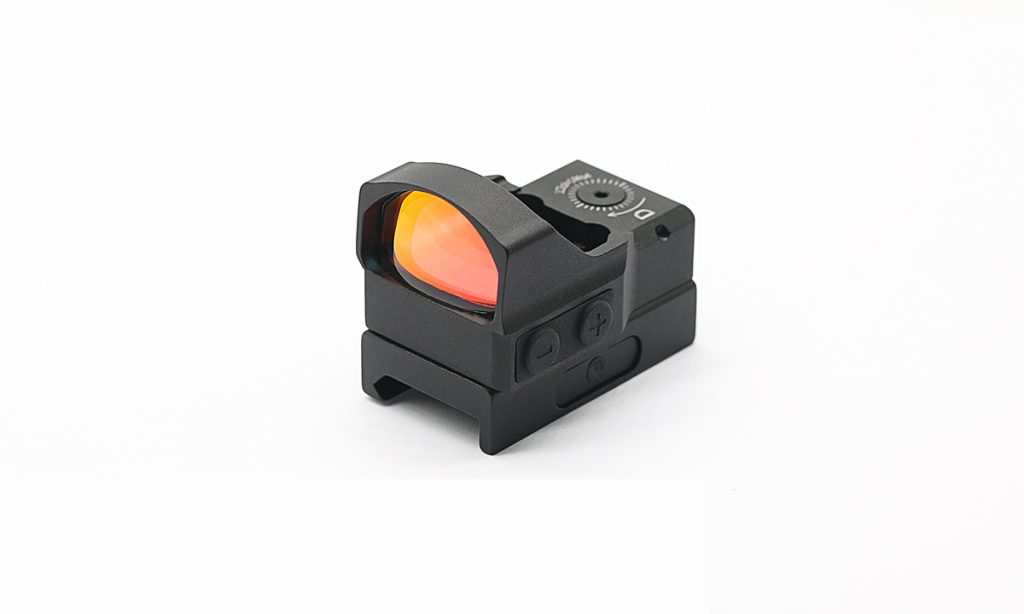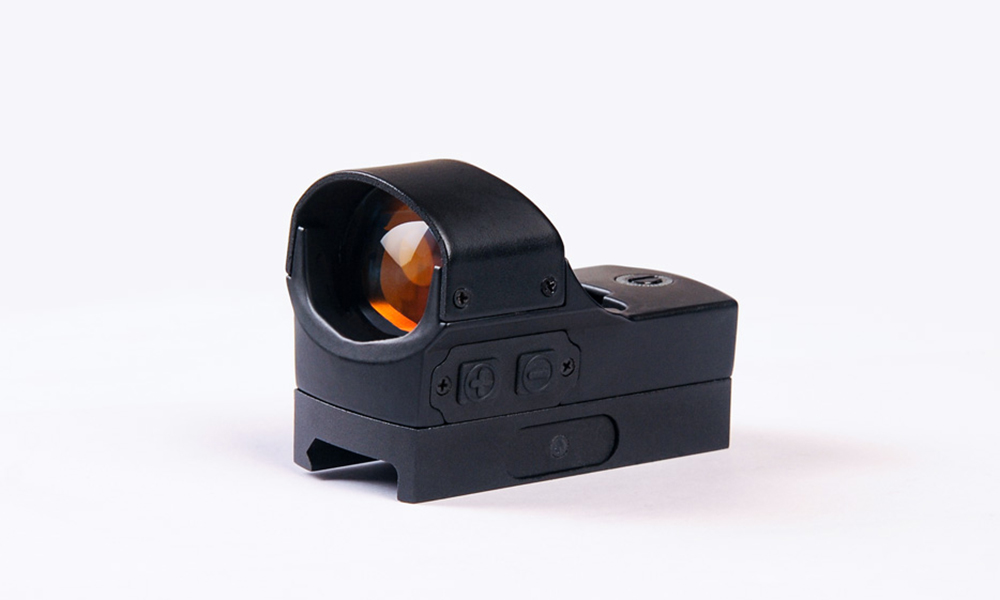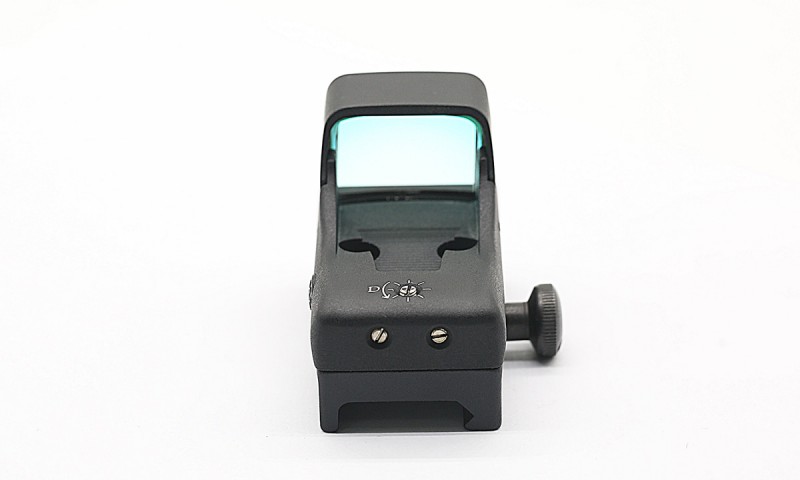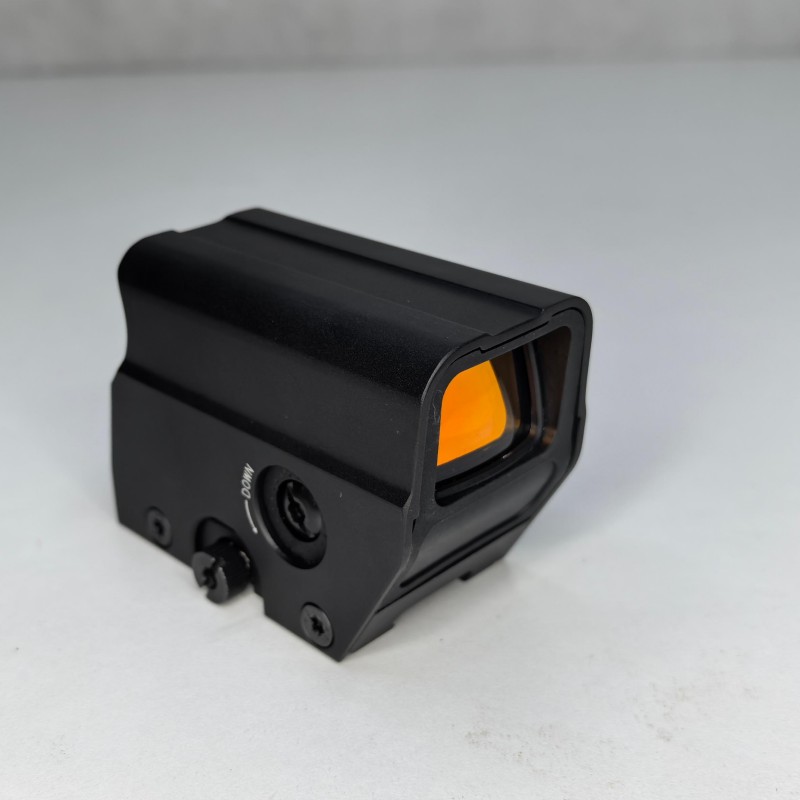A red dot sight is an auxiliary optical sighting system used by hunters, sport shooters, and tactical users. It offers fast target acquisition and is free of parallax error. A red dot sight’s effectiveness can be greatly affected by lighting conditions, whether it be bright midday sun, indoors or complete darkness, and everything in between.
We will help you with practical tips for red dot sight use in three areas of lighting conditions: daylight, low light, and nighttime usage. In addition, common errors due to excessive brightness like blooming and dot washout will also be discussed.
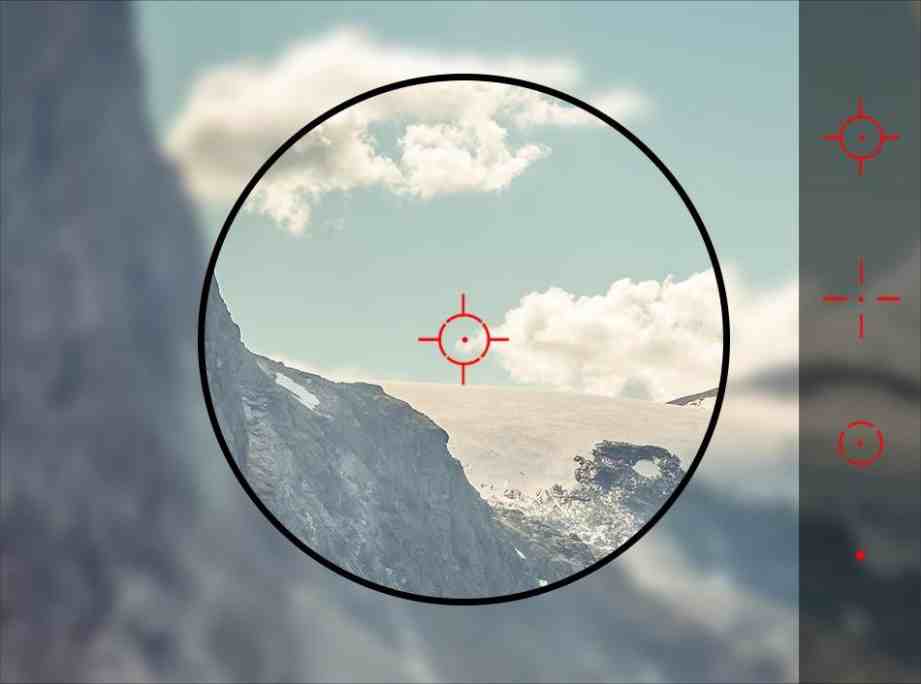
Using a Red Dot Sight in Bright Light
The challenges for red dot sight users are intensifying in direct sunlight. The light’s sheer intensity makes it hard to see the reticle and aim properly.
Common Challenges
The most common problem in bright light environments is almost always reticle washout. This occurs when the brightness of the optic’s light is significantly lesser than the amount of light around it, thus making red dot sights nearly impossible to use. The dot may look to “vanish,” or look blurry and faded against highly lit backgrounds. This can be very problematic when focusing on light-colored targets or in highly reflective environments such as sand or snow.
Another common problem is glare caused by the lens of the scope itself. Because glare can be caused on both the target and reticle, this makes getting a clear field of vision exceptionally difficult. Lens coatings and quality do have some effect, however, even the best of lenses and glasses get compromised under extreme conditions.
Solutions and Adjustment Tips
- Enhancing dot visibility: The majority of modern red dot sights come equipped with several different brightness levels. During bright days, particularly when directly under the sun, to ensure visibility of the dot, brightness should be set at the maximum level.
- Applying anti-reflective coatings: Select red dot sights with anti-glare coated lenses or add a honeycomb filter to reduce reflections.
- Changing head position: In some cases changing head and shooting stance to align with the target can minimize glare reflected off the lens.
- Exploring alternatives: In some scenarios, green dot sights are observed to be clearer in bright light conditions due to the way the human eye interprets the green portion of the electromagnetic spectrum.
Using a Red Dot Sight in Low Light
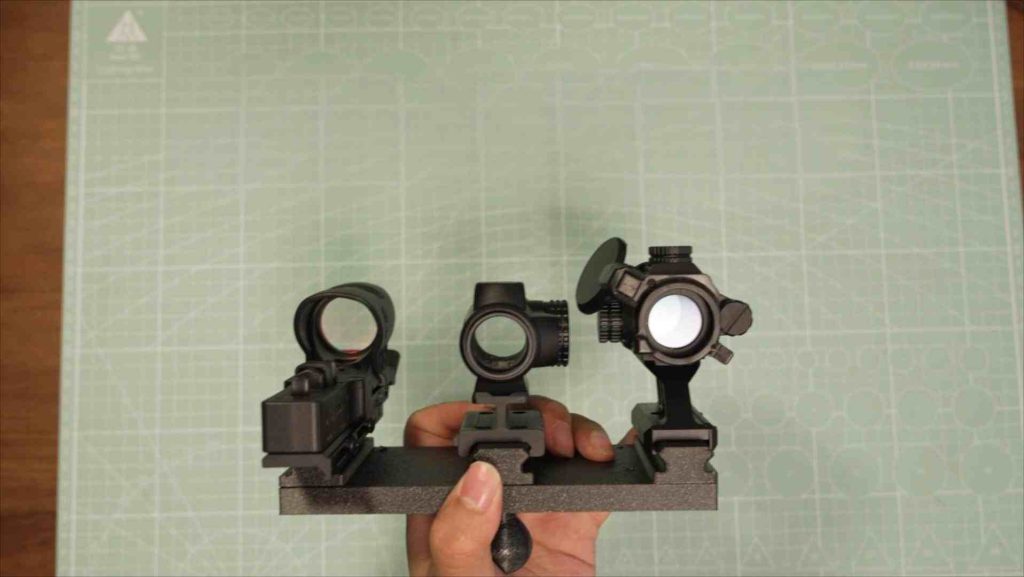
As daylight fades, a new set of challenges emerges. Low light conditions, such as those encountered at dawn, dusk, or in heavily shaded areas, require a different approach to red dot sight usage.
Key Issues:
The primary issue encountered in weak illumination settings is “blooming” or “starbursting” phenomena. This is when the brightness of the red dot is set too high relative to the ambient light. As a result, the red dot will not only glow but will also seem as if it has enlarged to fuzzy or irregular edges like a small starburst. This effect can mask the aim point and make precise sight alignment difficult. Those with astigmatism may find this effect magnified. Another challenge is confirmatory target identification. While the red dot is visible, the target may be poorly illuminated making it difficult to see clearly and identify.
Effective Tactics and Adjustments:
- Lower brightness settings: The dot should be set to low where it is only visible and not overpowering. The dot needs to be sharp and not “glow.”
- Apply target-contrast logic: Your dot brightness should have a counter action to your surroundings. If the background is dark, a dimmer dot works better.
- Ambient light conditions: Avoid absolute black conditions when indoors unless using a night vision compatible optic.
Using a Red Dot Sight at Night
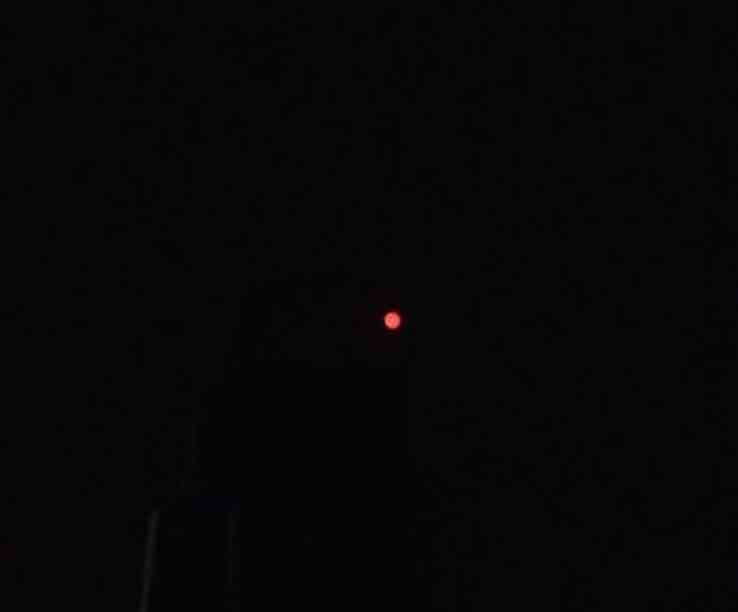
The most difficult situation to utilize a red dot sight is in complete darkness. When there is no source of ambient light, both the target and the environment will be blind to the naked eye.
Night-Specific Challenges
The most obvious challenge at night is not being able to see the target. A red dot sight is not a night vision scope; it only provides you with an aiming point. If you can’t see what you’re attempting to aim at, the red dot doesn’t do you any good.
A second challenge is maintaining situational awareness. In complete darkness, it’s extremely easy to become disoriented and lose your sense of surroundings. This can be a real tactical disadvantage.
Tactical Tips and Best Practices:
- Use NV-compatible brightness settings: High-end red dots usually have special night vision settings. These very low settings allow for co-use with NVGs without over-saturating the sensor.
- Train scanning techniques: In darkness, your dot may not be your only aiming reference. Train to align your optic by shadow, silhouette, or auxiliary IR laser aiming.
- Backup lighting devices: Use IR flashlights or hand-held white light to identify targets as needed.
- Training is crucial: Night usage is complex. Dry and live fire training in low/no-light conditions is required to build muscle memory and confidence.
Practical Red Dot Brightness Adjustment Tips
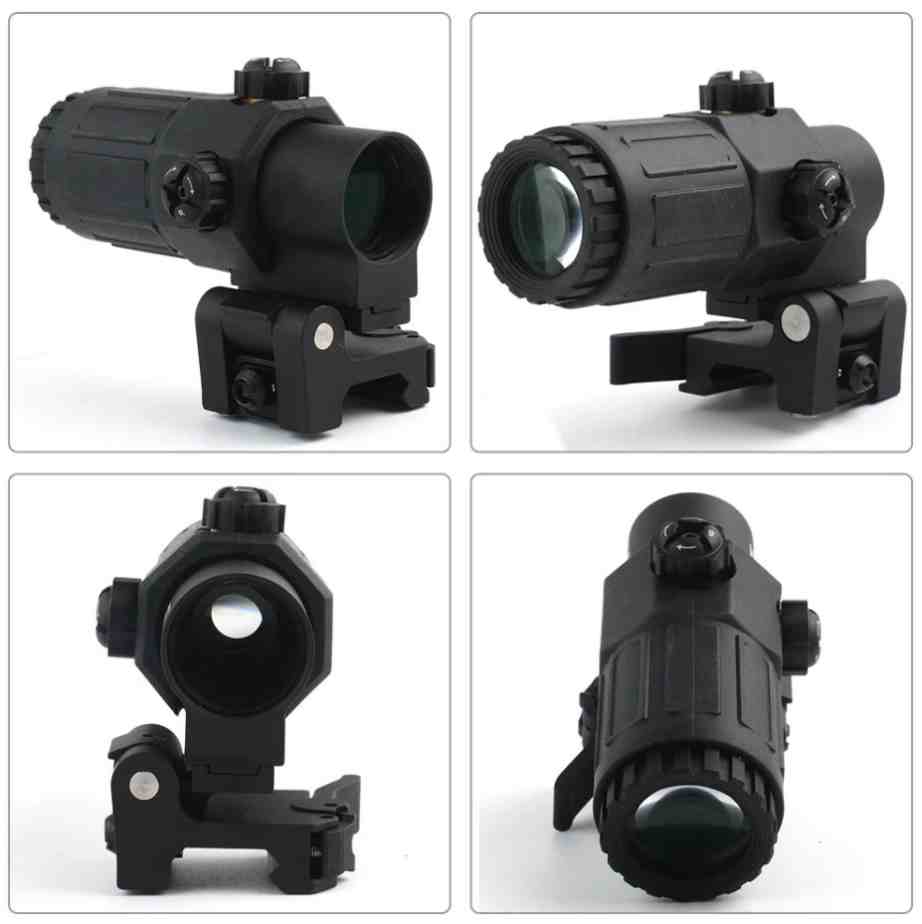
Adjusting brightness is more than just ensuring the dot is visible. It impacts aim speed, target identification, and eye fatigue. Here are some proven tips on adjusting brightness:
- Real-time changes: “Set and forget” does not apply to brightness levels. Always check dot visibility while going from indoor to outdoor, or vice versa.
- Dot should be crisp, not glowing: If your red dot has a halo or appears fuzzy, it’s too bright. Tweaking it until sharpness restores will fix this. “Glow” effects means one is adjusting brightness too high.
- Practice on each level: Every practitioner should master all sight settings, knowing which is optimal for every time of the day. Practicing on every level is ideal.
- Battery life matters: Higher brightness consumes more power. If battery life is a concern, use the dimmest setting that remains clearly visible.
Final Thoughts
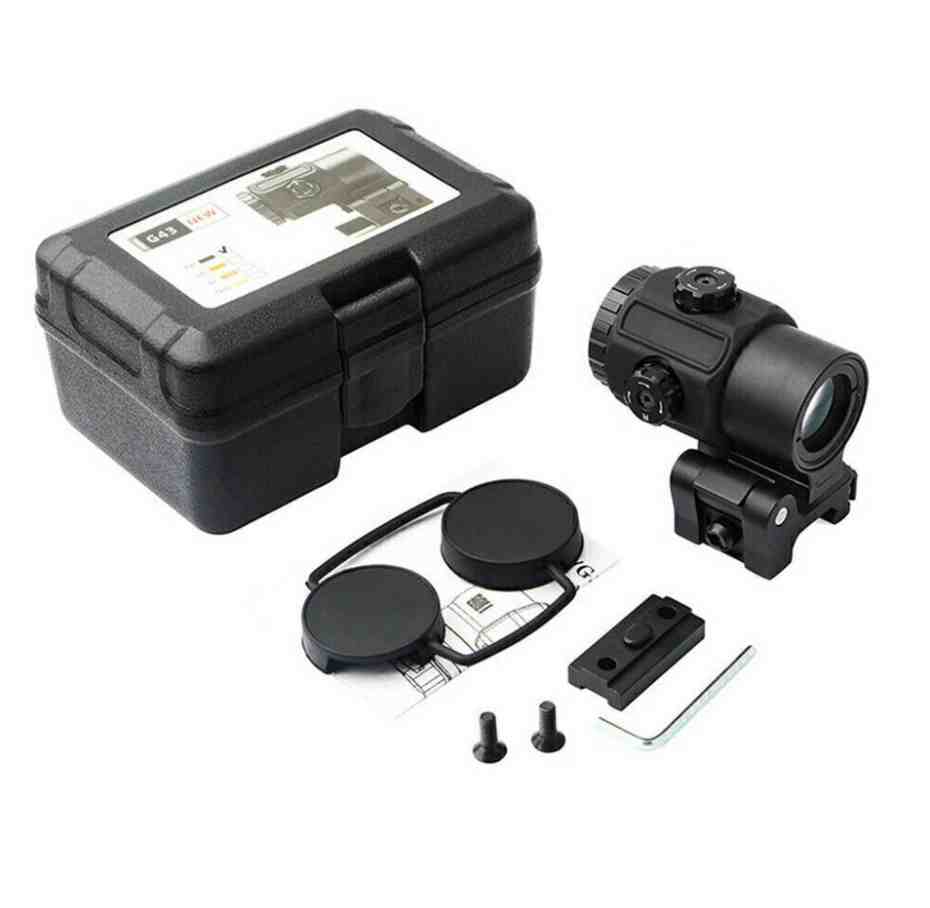
Lighting conditions play a crucial role in how effectively you can use your red dot sight. From bright desert sun to pitch-black environments, understanding how to adapt your sight settings ensures you’re always ready to engage accurately and confidently.
Whether you’re a recreational shooter, a hunter, or a tactical operator, mastering your red dot under varying lighting conditions can make a world of difference in real-world performance. Practice regularly, stay familiar with your optic’s features, and always adjust brightness to match your environment.
When properly set up, your red dot sight becomes a true force multiplier—day or night.

